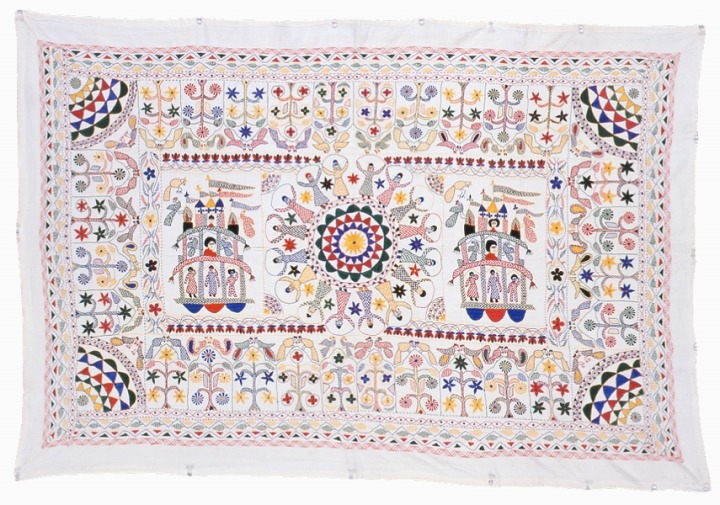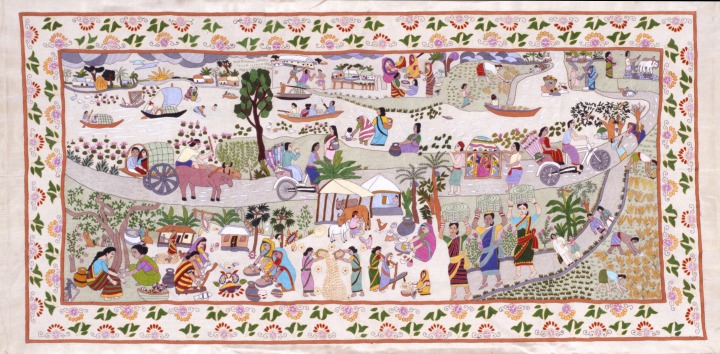Kantha
From the Daily Use to Artwork
Kantha is quilt embroidery from the Bengal region, in Bangladesh and West Bengal state in India, traditionally produced by women, by folding and layering thin cotton material, such as the fabric from old saris and lungis (waistcloth), reusing the textiles to produce sheets and bed covers for daily use. Kantha for special occasions, such as weddings and religious ceremony, are designed with the best most auspicious patterns including Hindu deities, lotus flowers, or the tree of life embroidered with colorful threads from saris, contributing to the high value given to the embroidery as folk art. After independence, Kantha in Bangladesh became commercialized and began to be sold as nakshi kantha both nationally and internationally. It is seen by NGOs as a means of providing women with a livelihood in a society disrupted by the Liberation war and poverty. However, with its commercialization there has been a shift away from women in the village to male designers in the city, and in terms of materials away from old fabrics and threads to new cloth and synthetic fabrics, and from its original use as a quilt to artwork like painting. Thusit becomes a vibrant symbol of Bangladeshi culture, dispeling the image of the poorest nation.
[Igarashi Rina]

Designed and produced by BRAC (Bangladesh Rural Advancement Committee)/Aarong "Lotus with Lakshmi and Two Chariots (Tapestry)" 2000 embroidery on cloth

Designed and produced by BRAC (Bangladesh Rural Advancement Committee)/Aarong "Golden Bengal (Tapestry)" 2000 embroidery on cloth
